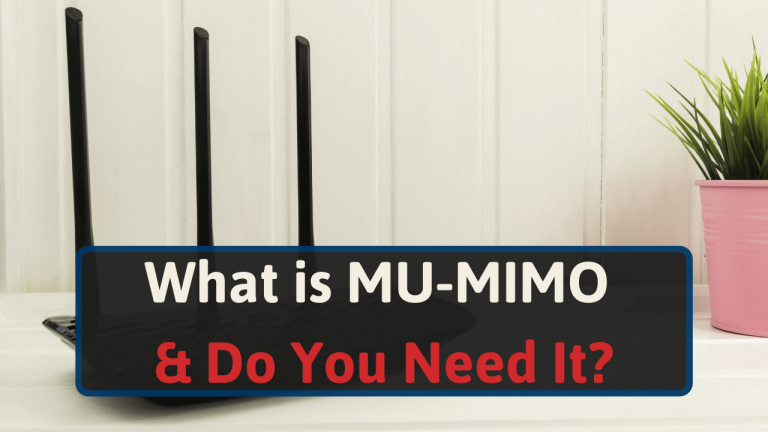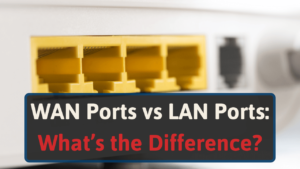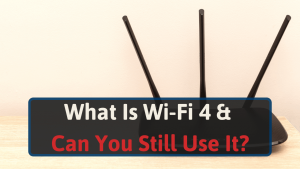If you looked up MU-MIMO online, chances are that even after some reading you are still somewhat confused.
We’ve compiled several trustworthy resources into an easy-to-read article so you can decide if you really need MU-MIMO, or not.
Let’s get started.
What is MU-MIMO?
In previous Wi-Fi standards like 802.11n, SU-MIMO (single-user MIMO) was the best we could hope for.
This technology only allowed routers to communicate with one device at a time. If you had multiple devices connected to your router, each of them needed to wait for its turn to communicate with it.
It was okay for regular use, and sometimes we didn’t even notice our devices waiting their turn to communicate with our routers.
This technology only allowed routers to communicate with one device at a time. If you had multiple devices connected to your router, each of them needed to wait for its turn to communicate with it.
It was okay for regular use, and sometimes we didn’t even notice our devices waiting their turn to communicate with our routers.
These days, more and more devices at home like TVs, lights, and even fridges are connected to the internet.
Because of this, congestion and interference can significantly increase and degrade our wireless signal performance. As more devices need to wait for their turn, wait times get longer, and speed suffers.
In 2016, the 802.11ac wave 2 wireless standard introduced MU-MIMO [1] as a solution to this problem.
These devices are able to break up your bandwidth into separate streams. Taking advantage of beamforming technology each of these streams can communicate with a different device, at the same time!
Depending on your use, this could seriously improve your Wi-Fi speeds.
Variations of MU-MIMO
If you look up MU-MIMO-enabled routers, you will probably come across terms like 2×2, 3×3, and 4×4.
While it might look confusing, it has a pretty simple explanation. The first number is the number of antennas the router has. The second number is the maximum amount of streams it can output.
So, for example, a 3×3 MU-MIMO router has 3 physical antennas. And it is able to connect to 3 devices at the same time.
Limitations of MU-MIMO
MU-MIMO looks great on paper, but using it might not be as easy as getting a compatible router.
First and most importantly, your client device (laptop, cellphone, etc.) also needs to be MU-MIMO compatible. The good news is that most newer (think 2018 onwards) mid-tier and flagship devices are sure to support it.
Second, it only works in the 5 GHz band for WiFi 5 (802.11ac). Meaning that any devices you connect to the 2.4 GHz band will not be able to use this feature, even if both the router and the client support it.
Most people are still using WiFi 5 routers at home. But it’s important to mention that Wi-Fi 6 (802.11ax) introduces MU-MIMO for the 2.4 GHz band too. This allows up to 8×8 capabilities!
Another important thing to note is that MU-MIMO in Wi-Fi 5 only supports downlink connections. Meaning you will get no benefit whatsoever in your upload speeds.
However, Wi-Fi 6 introduces the ability for client devices to take advantage of MU-MIMO for uplink communication, too.
Do I Need MU-MIMO?
It’s easy to get discouraged when searching for opinions about MU-MIMO. The truth is, for a long time, having a MU-MIMO enabled router provided little real-world benefits.
Some reviewers even call it a “snake-oil” feature. Meaning it is more of a marketing selling point than a real benefit for users.
They were not wrong, at least not then. MU-MIMO routers were expensive and few devices supported the 5 GHz band to begin with, which is needed to use this new technology.
But as of 2022, a time where 5 GHz is more widely available, you can buy MU-MIMO routers for inexpensive prices. And as more client devices support the technology, it might be worth a shot.
We still wouldn’t say you need MU-MIMO, especially if you only have 2 or 3 wireless devices at home.
But as more and more devices support it, and more and more devices at home are Wi-Fi capable, it might not be too long until it’s the standard. Otherwise, congestion and wait times will quickly become a problem.
In order to decide for yourself if it’s worth it, consider the following pros and cons:
Benefits:
- Uninterrupted signal to several devices at the same time.
- Increased network capacity helps with streaming, video calls, and gaming.
- Better download speeds.
Drawbacks:
- Both router and client device need to be MU-MIMO compatible.
- Limited to 5 GHz band in Wi-Fi 5.
- Limited to downlink connections in Wi-Fi 5.
Wrap Up
MU-MIMO is in a pivotal moment in its history. It’s going from a “useless” feature for most home users to something we might not be able to live without in the near future.
If you are considering MU-MIMO because of signal or range issues, it might be worth checking other ways you can improve your connection. Spending money on a new MU-MIMO compatible router will not solve these problems.







